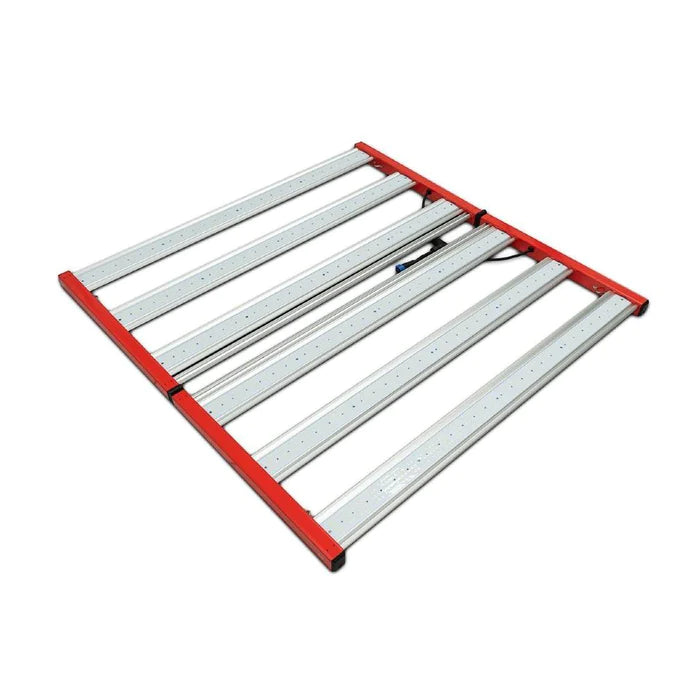
Hydroponic Lighting: Types Of Grow Lights
, by BVV Team, 5 min reading time

, by BVV Team, 5 min reading time
Choosing the right grow lights is important when caring for your indoor plants. It's easy to get overwhelmed trying to distinguish between the different types of grow lights out there. Read on to learn about the diverse spectrum, so you'll know exactly when to use each type of light.
Choosing the right grow lights is important when caring for your indoor plants. It's easy to get overwhelmed trying to distinguish between the different types of grow lights out there. Read on to learn about the diverse spectrum, so you'll know exactly when to use each type of light.
LED lights are tiny light bulbs that fit into an electrical circuit. They don’t have a filament that’ll burn out over time and won’t get especially hot. LEDs are illuminated solely by the movement of electrons in a semiconductor material, and last as long as a standard transistor.
LED lights last thousands of hours longer than incandescent bulbs. LEDs also consume up to 90% less power than incandescent bulbs while still being able to penetrate plant canopies and reach all flower or vegetation sites. The best LEDs are full-spectrum, such as our Neocision Spectra Grow Lights. These are designed to mimic natural outdoor sunlight to help your plants grow healthier and yield better harvests.
Rather than quartz or PZA, CMHs are hydroponic lights made from a ceramic composite arc tube. The higher operating temperature of the ceramic tube allows for an ideal mixture of gases. This creates a fuller spectrum of light to encourage the overall growth, health, and yield of your plants. CMHs offer moderate to high levels of canopy penetration. But this mostly depends on their pruning and training.
Made by combining halogen with metal, metal halides work when an electrical arc goes through a gaseous mix to create light. The two main components are the outer bulb and the inner arc tube. The latter part has two electrodes at either end. Once the voltage is supplied, the mercury begins to heat up and vaporize. This helps the electrical current grow. When the metal halides turn into gas, the atoms move away from the arc and create white light for your indoor plants.
HPS are made with a narrow arc tube supported by a bulb frame. The interior of the arc tube is highly pressurized for increased efficiency. Sodium, mercury, and xenon are usually found here. The arc tube is made of aluminum oxide ceramic, as this is resistant to the corrosive effects of these alkalis. The light can turn from blue to white to a yellowish blue.
Fluorescent hydroponic lights are low-pressure, mercury-vapor, and gas-discharge lamps that use fluorescence to produce visible light. An electrical current in the gas excites the mercury vapor, which produces short-wave ultraviolet light. This then causes a phosphor coating on the inside of the lamp to glow.
|
Bulb Sizing |
|
T = Tubular shape |
|
T5: 5⁄8 of an inch in diameter |
CFLs operate by having an electrical current driven through a tube containing argon and a small amount of mercury vapor. This generates invisible ultraviolet light that excites the fluorescent coating inside of the tube. In turn, this emits visible light for your indoor plants.
Induction lighting is another type of fluorescent grow light. Induction lamps create light by using an electromagnetic field. This stimulates the mercury particles that are mixed in an inert gas such as argon or krypton. Here, the mercury creates a UV light and a phosphor on the inside of the bulb or tube. Then, the energy is filtered into visible light. Note that induction lighting doesn’t use electrodes in its tubes.
A plasma grow light works by exciting sulfur plasma through microwave radiation. Keep in mind that this type of lighting misses key parts of the light spectrum that are important for plant growth. That’s why this should be supplementary to other lighting choices.
A magnetic grow light is made with technology similar to that of a regular fluorescent bulb. Magnetic induction lighting uses induction instead of electrodes. Because of this, it lasts longer than regular fluorescent grow lights and provides a great light spectrum for indoor plants.
Double-ended hydroponic lights are gas-filled tubular lamps with two end pieces connecting to a reflector. Most grow lights (e.g. ceramic metal halide, fluorescent lights, magnetic, plasma) are single-ended: only one end connects with the reflector.
Start building vision and variety with us. Our leading extraction equipment company invites you to shop at our own DLC-listed LED grow light collection: Neocision Spectra. Browse through all the different types of BVV grow lights to support your budding plants as they grow to their fullest potential.


